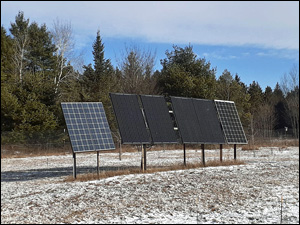|
Things in our life sure do change and grow! |
|
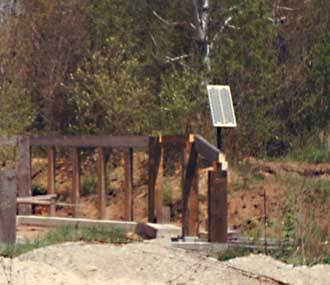
1983 - Our first solar electric PV panels! |
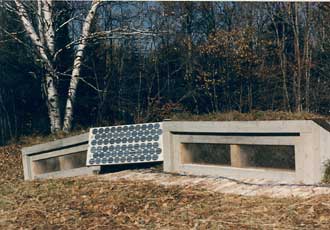
1985 - Finally on the House |
|
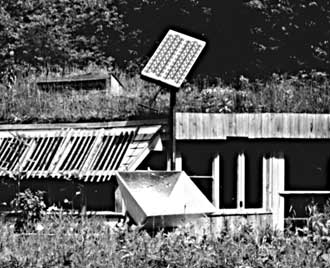 1987
- Homemade Tracker |
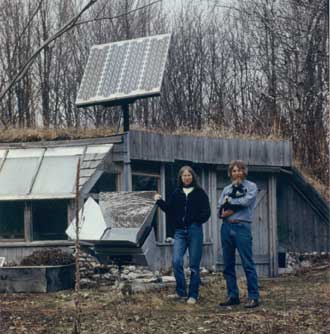
1993 - The Array Grows |
|

1994
our "new" (used) Solar Heating Panels |
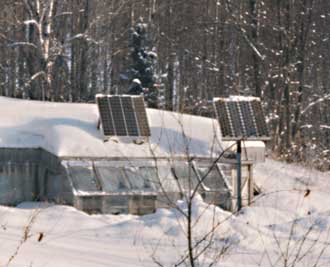
1996 - and Grows |
|
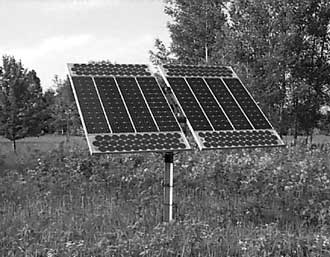
1997 - the trees in front of the house grew
(surprise!) so the array had to move. Might as well add a few more panels while
we're at it. |
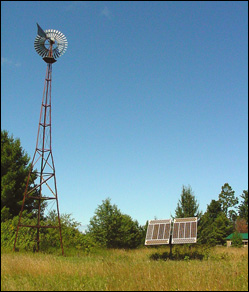
Windmill & Solar Panels - 2000
|
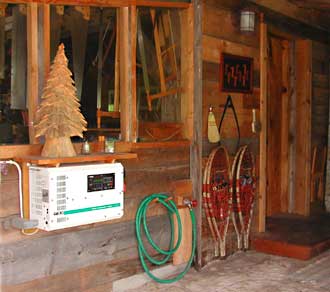
Inverter in Entryway - 2004 |
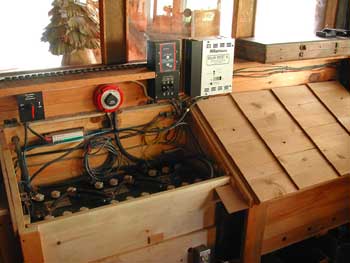
System control center - 2006
. |
|
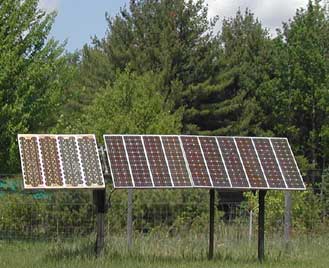
2007 - always room for a few more |
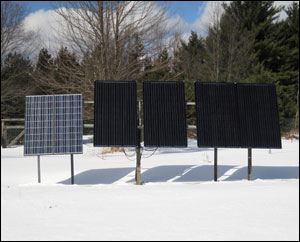
2015 - Four 250-watt Solar World panel plus two Kyocera 135-watt
panels for a total of 1,135 watts at 24 volts. |
February 27, 2019 - New Solar panel finally mounted - in
the snow
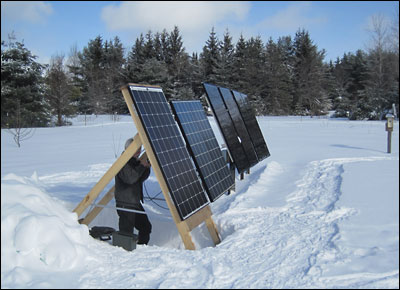
Last fall a friend gave us a good deal on one of the last Solar World
300-watt panels but we didn't get it installed before the snows came. The
other day I (Steve) decided it was time to get it out in the sun where it can help
us out during the coming cloudy days.
The new panel will add about
20% to our charging capacity; up from 1135 to 1435 watts. We'll notice the
increase in power mostly on cloudy days. The temporary mount is made from
poplar 2x4's and four aluminum angle brackets. I had to dig 2-1/2 feet down
to find the ground. I was going to adjust it a little but the bases are
frozen in the snow already so it is there until spring - which may
be some time in April. We had a high temperature near 20 degrees today but
the sun was out and the wind was light so it was a fun project.
|
|
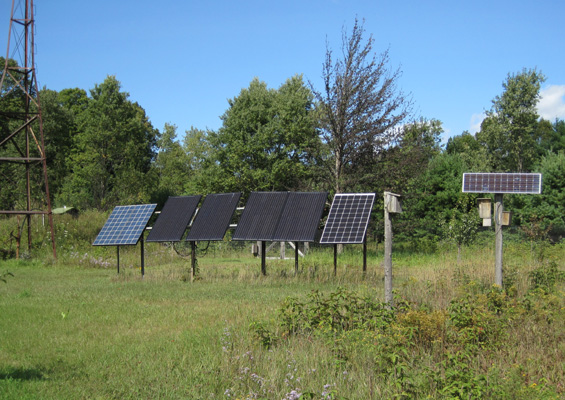
2020 - an abundance of power |
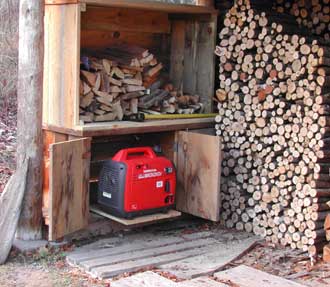
For those cloudy short days of early winter |
Fall/Winter 2019 Update
In the summer 2019 we
noticed that our solar system didn't seem to be fully charging the
batteries as it should. We checked the
batteries periodically throughout the fall and early winter and made
some adjustments to the controller. Over a period of several months
there seemed to be a significant loss of battery capacity so we
decided to install one more 300 watt panel and replace the controller.
The existing controller, a Solar Boost 50 was probably working fine
but the new panel made the array too large for the 50 amp
controller. The new one is an Outback
FlexMax-80. The increase in capacity was welcome and the Outback controller
setup is more user
friendly.
At that time we also hooked up a battery desulfator
with the hope that it might help bring
those tired Lead Acid batteries back to life. The combination
of the additional panel, new controller and modified settings on the
diverson controller worked well and the batteries recovered and
served us well until the fall of 2021.
|
|
Fall 2021 Update
As we were approaching winter it became evident that our old lead-acid
deep cycle batteries (the red-topped ones in the photo) weren't going to
have the ability to get us through those long
dark days and nights. Those 12 6-volt batteries were installed in
December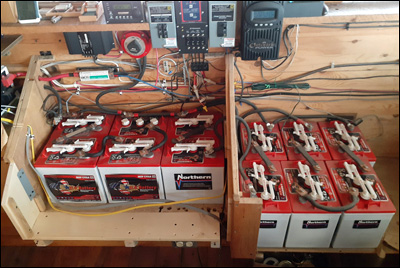 of 2015 so they gave us good service for over five years -
which is about average for that type of battery in a system like ours.
At a cost of about $1,200 that worked out to an 'electric bill' of less
than $20 per month for the last 5+ years. After doing lots of
research we decided it was time to upgrade our system to Lithium Iron
Phospate (LiFePo4) batteries.
of 2015 so they gave us good service for over five years -
which is about average for that type of battery in a system like ours.
At a cost of about $1,200 that worked out to an 'electric bill' of less
than $20 per month for the last 5+ years. After doing lots of
research we decided it was time to upgrade our system to Lithium Iron
Phospate (LiFePo4) batteries.
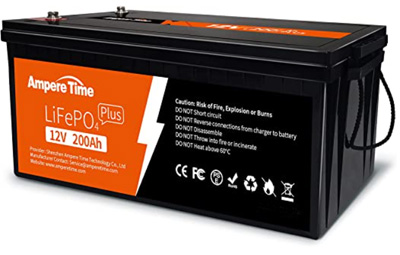 Although
the new batteries cost significantly more than our old set they should
have a longer lifespan than the lead-acid batteries and outperform them too. If we take care
of them these new batteries should last at least 15 years and perhaps as
long as 20 years. They will also provide almost three times the usable
storage. Although
the new batteries cost significantly more than our old set they should
have a longer lifespan than the lead-acid batteries and outperform them too. If we take care
of them these new batteries should last at least 15 years and perhaps as
long as 20 years. They will also provide almost three times the usable
storage.
Another advantage of these batteries is that there are
only six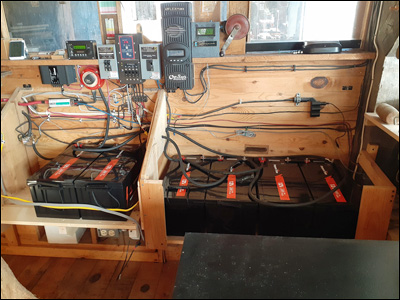 of them and they each weigh noticeably less than the old ones. The
installation went well and the solar charge controller and
inverter/charger settings have been updated. It has been fun watching
the meters which have been confirming that the batteries are performing
as expected.
of them and they each weigh noticeably less than the old ones. The
installation went well and the solar charge controller and
inverter/charger settings have been updated. It has been fun watching
the meters which have been confirming that the batteries are performing
as expected.
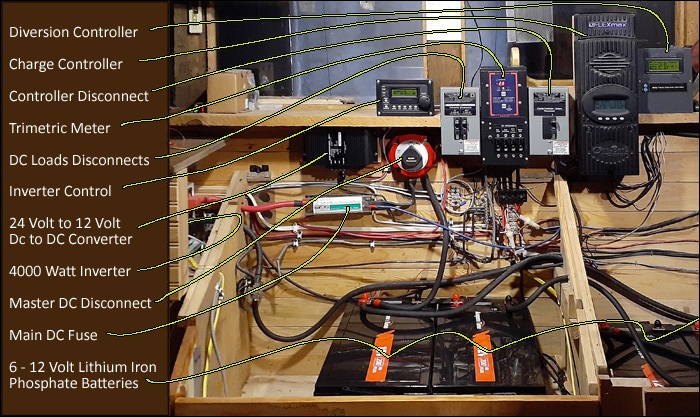
2021 AE System Components
Here
are the current components in our system:
· 4 -
250-watt Solar World panels
· 1 - 300-watt Solar World
panel
· 2 - 135-wat 12 volt Kyocera panels in series
Total charging capacity = 1435 watts
· Outback
FlexMax-80 charge controller
· Magnum 4000 watt, 24
volt sine wave inverter
· Samlex 20 Amp 24 volt DC
to 12 volt DC converter
· Trimetric Volts/Amps/AmpHrs
Meter
· Homemade Arduino microcontroller-based
diversion controller
· 6 - Ampere Time 12-volt, 200 AmpHr
Lithium Iron Phosphate batteries
(3 sets of
2 batteries for 660 AmpHrs at 24 volts)
· Appropriate fuses, circuit breakers and disconnects
(updated
12/2021 ss)
|
|
* * * * * *
Copyright © by Susan Robishaw & Steve Schmeck |
Our favorite sources for alternative energy
information are...
Home Power Magazine, POB 520,
Ashland OR 97520, 916-475-0830
http://www.homepower.com
THE print source on alternative energy; it was the first
and is still the best.
Midwest Renewable Energy Association, 7558 Deer Rd, Custer WI 54423,
715-592-6595, info@the-mrea.org,
https://www.midwestrenew.org
MREA is responsible for the largest and oldest renewable energy fair the third weekend
in June (Solstice Weekend). Highly recommended if you are at all interested in
alternative energy or alternative lifestyles and ideas.
Backwoods Solar Electric Systems, 1589
Rapid Lightning Rd, Sandpoint, Idaho 84864, 208-263-4290,
http://backwoodssolar.com/
Good folks, good information, good prices. We've dealt with them for many, many
years and send people to them regularly. Check them out.
|
